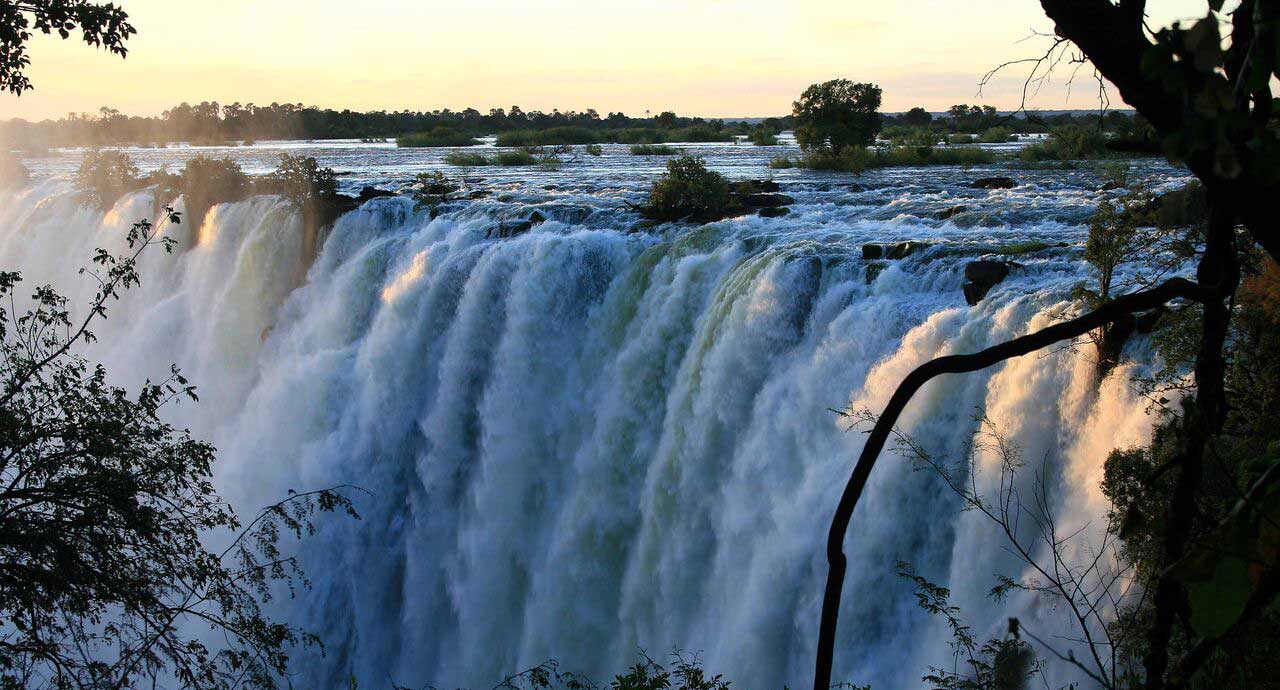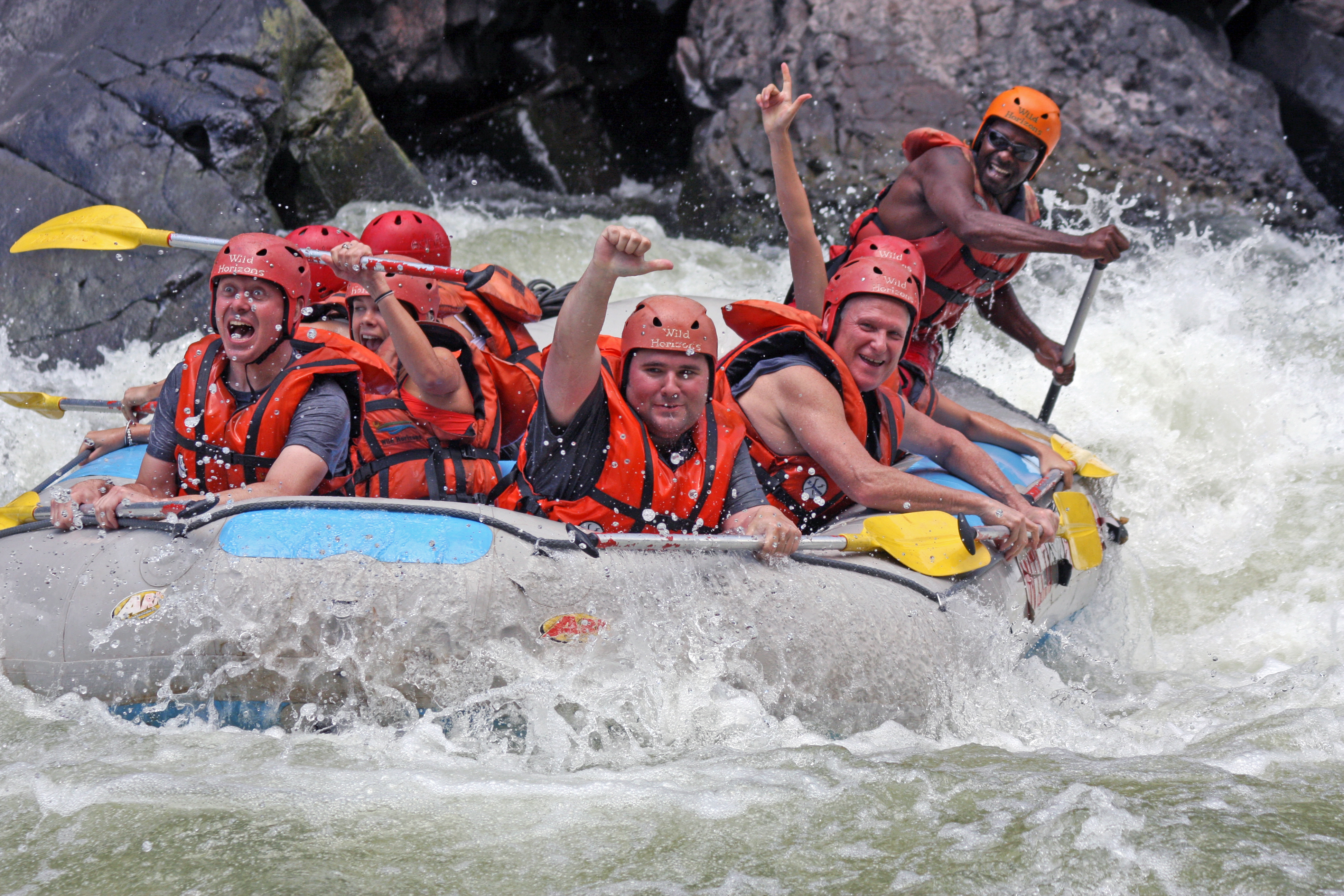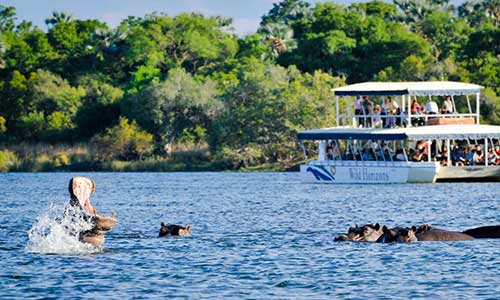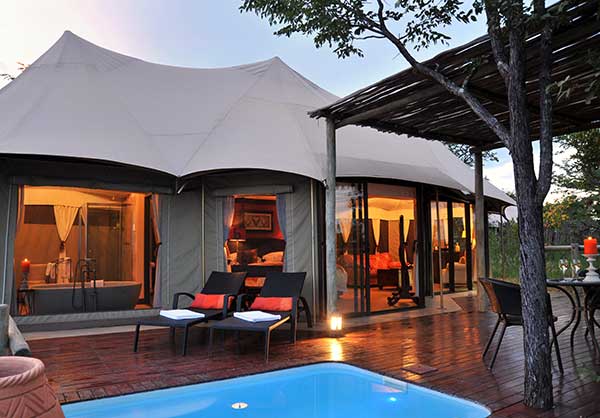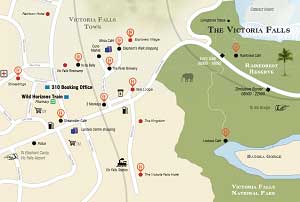Introducing The Wallow Lodge If you had to write one sentence for a white water rafting trip, one for a luxury lodge and one for a home-hosted meal, they would all sound very different. But underneath all the adjectives and superlatives, every Wild Horizons product...
The Best Time to Visit Victoria Falls
The BestTime to Visit Victoria Falls
When it comes to travel, there is no one size fits all way to explore the world. Some people disappear into mountain ranges with just a backpack and book for company, while others choose to lose themselves in bustling towns filled with foreign languages and unfamiliar faces. Some will chase sunsets on tropical beaches while others retreat to snow-capped cabins with crackling fireplaces. We are often asked when the best time to visit Victoria Falls is, and the answer varies for every unique traveller. Each month offers something different, and every season unravels new panels of colour, the presence of different forms of life and a different, yet ever enthralling, rainforest experience. This means that you’ll have to visit us more than once, and preferably at different times of the year, to truly get a sense of your favourite season in Victoria Falls.
We love that every month of the year transforms the beautiful town and landscapes, revealing a new set of adventures for the different types of travellers. In burnt orange or glossy green, Victoria Falls wears each season exquisitely and we have compiled a calendar to tell you the best of each month.

January
Weather:
It’s the height of summer during January and it’s at this time that you can expect hot days, often resulting in spectacular thunderstorms. The smell of rain on dry earth signals the beginning of the summer months.
In the rainforest:
Victoria Falls becomes more intense with increased river flow. Visitors are awestruck by the Smoke That Thunders and plumes of mist swell above the rainforest.
Wilderness and wildlife:
The land comes alive in variegated greens from the lush grasses to leafy treetops that provide a delicious feast for tall browsers such as elephants and giraffes. There is a lot of birding activity in January as many nestlings are raised, but the wildlife is dispersed as there are many water sources throughout the bush from the rainfall, so it is not the best time for game viewing.
Activities:
The white water rafting generally changes to the high water run in January. Find out more about the difference between high and low water rafting here.
February
February is the month of love and with stunning, secluded luxury lodges, spectacular sunsets and the intrinsic feeling of connectedness that comes from time spent in nature, Victoria Falls is the ideal place to spend this romantic month. Old Drift Lodge and The Elephant Camp are stunning lodges in the heart of the wilderness with tranquil spas, outdoor fireplaces, and beautiful views. Romantic highlights at Old Drift Lodge include a private dinner on the jetty and a sunset beach picnic on the banks of the Zambezi. At The Elephant Camp, cocktails and Canapes on the edge of the Batoka Gorge bring drama and excitement to the evening, followed by a private dinner on the suspended deck.
Weather:
The rainy season is characterised by hot and humid weather with dramatic bursts of thunderstorms.
In the rainforest:
The waterfall is a thunderous roar with the Smoke that Thunders rising higher in the sky. Many rainforest flowers start to bloom and the grass is at its most luscious and nutritious.
Wilderness and wildlife:
There is thick vegetation growth in the National Parks and animals such as zebra look exquisite against the vivid green backdrop. African ebony trees come into fruit and the waterbuck breeding season begins. The National Park is dotted with many nursing herds.
Activities:
The high water rafting run continues. This is a great time for the Flight of Angels as the wilderness is a beautiful mosaic in every shade of green and the waterfall flows so furiously.
March
Weather:
The days are sunny and the nights are warm as the rainy season comes to an end.
In the rainforest:
Although the rainy season comes to an end the Victoria Falls is reaching peak flow as the river levels are so high. The mist can be very dense in the rainforest.
Wilderness and wildlife:
The summer rains mostly fall between November to February each year, however, the bush remains alive with flowering plants as the progression towards Autumn begins. It is not uncommon to see many beautiful blooms attracting antelopes that take advantage of the plentiful food sources. Kudu and buffalo breeding peaks and the migrant birds begin to depart. The grasslands are in seed and Baobab trees hang heavily under the weight of their Cream of Tartar pods.
Activities:
The rafting season usually closes in March due to the high volume of water rushing through the gorge.
April
Weather:
April is a wonderful time with warm, sunny days and crisp evenings. The beginning of Autumn’s chill starts to creep in so evenings spent around the campfire are magical.
In the rainforest:
The water from our catchment area in Zambia arrives and the Victoria Falls reaches its highest flow with an average of 500 million litres of water flowing over the edge every minute! The highest ever recorded was 700 million litres in 1958, but this year we expect to come close! On the 23rd of April, the Zambezi River flow was 4,086m3/s at the Big Tree River station. To put that into context, last year on the same date the flow was 1,034m3/s. The Victoria Falls will undoubtedly be incredibly breathtaking, and it is incredibly unfortunate that so few people will see it due to the travel restrictions. However, we will be posting regular video clips and photographs onto our Facebook and Instagram pages so you can appreciate the majesty of Victoria Falls from wherever you may be.
Wilderness and wildlife:
During this time, the landscape is still wonderfully lush owing to summer rains. April is also the month of the impala rut and many interesting sightings of these animals interacting, fighting and mating with each other are possible.
Activities:
The rafting is closed but this is a fantastic time for a meal at the Lookout Café, where the mist from the Falls can be seen curling through the black basalt gorge. You can still chase that adrenaline rush on the gorge swing, zip line and flying fox which are located next to the Café.
May
Weather:
May marks the advent of autumn with warm days and a slight chill creeping into the evening air.
In the rainforest:
The Zambezi continues to flow strongly despite the start of the dry season, creating incredible experiences within the rainforest.
Wilderness and wildlife:
Deciduous trees begin to lose their leaves leave a crunchy golden carpet on the rugged terrain within the National Park. This is the white-backed vulture and wild dog breeding season.
Activities:
This is a fantastic time to visit Victoria Falls as the mist is not so dense that it obscures photographic opportunities.
June
Weather:
Autumn gives way to winter and we experience warm days and chilly nights. Winter skies are clearest during May, June and July so this is a wonderful time for stargazing.
In the rainforest:
The water levels begin to drop slightly but the flow over the Victoria Falls is still very impressive.
Wilderness and wildlife:
Raptor courtship displays become more evident and the game starts to become concentrated near the river and watering holes and the grass cover recedes.
Activities:
Consider staying at Imbabala Safari Lodge as game driving and fishing is great during May. The rafting season begins in May/June with the low water run.
July/August
Weather:
The height of the dry season coincides with mid-Winter and the days are hot but you will need to bring something warm for the evenings.
In the rainforest:
The Eastern cataract in Zambia often becomes exposed due to low water levels of the Zambezi so to get the full impact of the Victoria Falls it is better to view the waterfall from the Zimbabwean side.
Wilderness and wildlife:
Mopane leaves begin to take on their distinctive winter hue of burnt orange and there is an increase in the elephant population on the Zambian side of the river which is the winter feeding ground for elephant from northern Zimbabwe and Botswana.
Activities:
This is a wonderful time for sunset cruises as the clear evening skies create beautiful stains of colour. There is also a chance that you will see elephant swimming from Zimbabwe to Zambian banks.
September
Weather:
As the season shifts into Spring the days become hotter and the nights warmer.
In the rainforest:
The Victoria Falls is best viewed from the Zimbabwean side. Right at the end of the rainforest is a rocky outcrop where you can sit and admire the geological details of the Gorge.
Wilderness and wildlife:
The bush remains golden brown, with dusty sunsets owing to the long winter. The spring rain has not yet arrived, however, the first glimpses of green shoots and leaves start to appear. Migrant birds start to arrive from Europe and elsewhere in Africa while the weavers begin breeding. The knob thorn acacia trees begin flowering in with the change of the season.
October, November and December
Weather:
October is the hottest month of the year with occasional bursts of storms that break up the heat. It is important to have lots of sunscreen and to bring a water bottle with you to fill up and stay hydrated during the day. The rains sometimes arrive in November but they could come later. It gets more humid towards December as the rainy season build up after the hot spell.
In the rainforest:
The Eastern cataract is largely exposed but this is just 400 meters of the 1,7 km waterfall and the other viewing points such as Main Falls and Devils Cataract continues to flow beautifully. The Eastern Cataract is slightly higher than the other sections which is why this short strip reveals the rockface behind the curtain of water.
Wilderness and wildlife:
This is an excellent time for game viewing as the wildlife congregates around the river and water sources. The Marulas flower and long-tail cassias display beautiful yellow flowers. Nature’s choir arrives in full force. Frogs of all sorts ring out beautiful melodies that harmonise with the sounds of crickets chirping. Along with frogs, summertime brings great tortoise and butterfly sightings. It’s also at this time that you can experience long fiery sunsets and windless evenings.
Activities:
October, November and December are excellent months for white water rafting and a swim in the famous Devil’s Pool above the waterfall.
What is your favourite season in Victoria Falls? We would love to hear your thoughts and personal preferences!

Introducing The Wallow Lodge
The Intimate And Exclusive Elephant Camp
Southern Africa stirs to life as travellers dream of their next adventure from a new point of view. Mindful of the challenges of a transformative year, The Elephant Camp West epitomises the future of safaris under canvas, offering guests a restorative sanctuary that...
Make February Unforgettable With a Valentine’s Month Special | Old Drift Lodge
Our Valentine’s Special is romantic retreat to the luxurious Old Drift Lodge in Victoria Falls. Our all-inclusive Valentine’s Special is valid for the month of February, so you save now and stay later.









